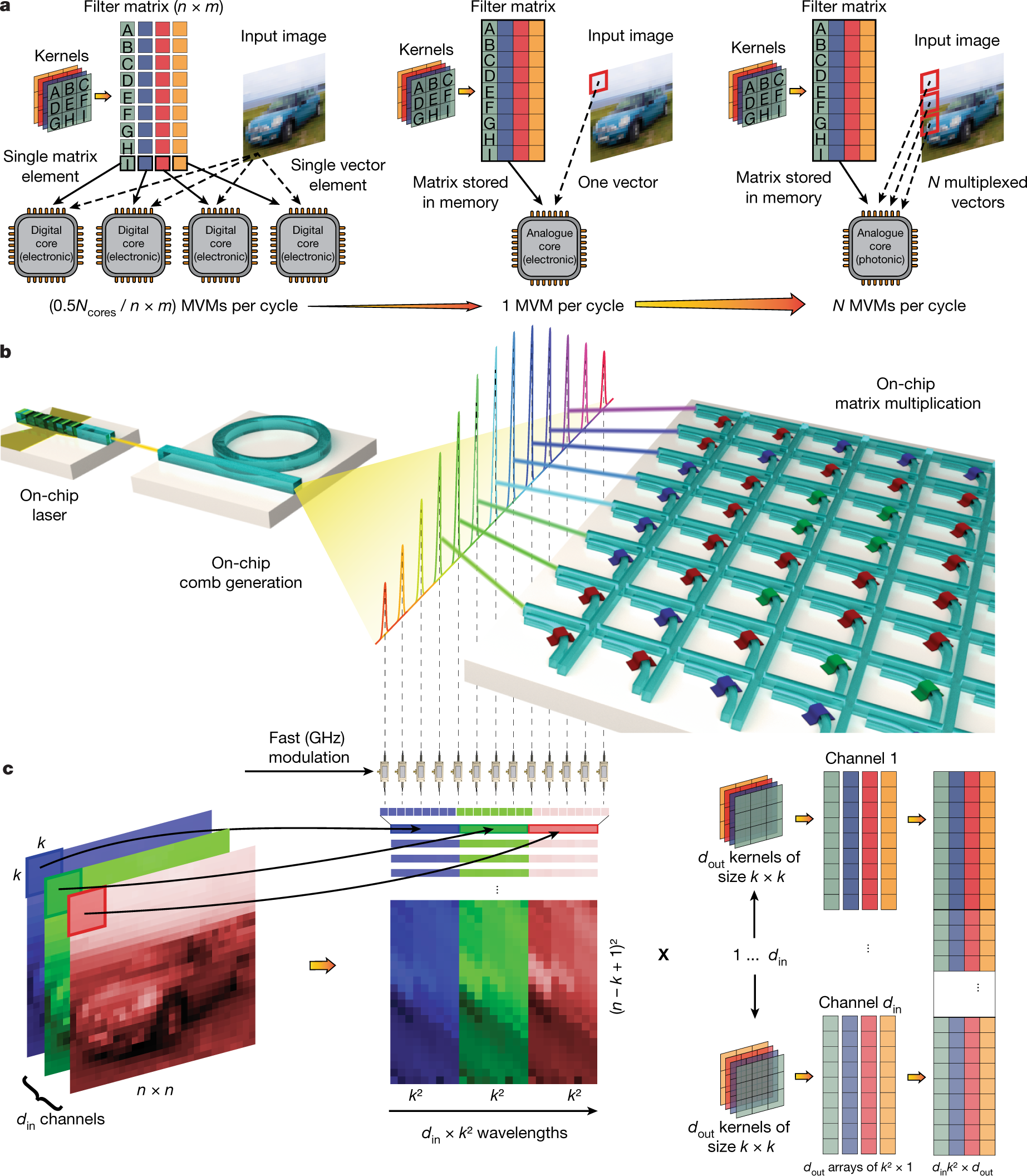MY 100-Day English -48
The explosive growth of artificial intelligence calls for rapidly increasing computing power. Two reported photonic (光子晶体) processors could meet these power requirements and revolutionize artificial-intelligence hardware.

Artificial intelligence (AI) is transforming various fields, such as clinical diagnosis, autonomous driving and speech translation. However, the quickly increasing volume of data in modern society poses great challenges for the electronic computing hardware used in AI, in terms of (在…方面) both computing speed and power consumption. Such issues have become a major bottleneck (瓶颈;障碍物) for AI. Writing in Nature, Xu et al. and Feldmann et al. report photonic processors that accelerate AI processing by harnessing (利用,控制) the distinctive properties of light. These demonstrations could inspire a renaissance (新生,复活) of optical computing (光学计算).
With the rise of AI, conventional electronic computing approaches are gradually reaching their performance limits and lagging (落后的,保温材料) behind the rapid growth of data available for processing. Among the various types of AI, artificial neural networks (人工神经网络) are widely used for AI tasks because of their excellent performance. These networks perform complex mathematical operations using many layers of interconnected artificial neurons3. The fundamental operation that uses most of the computational resources is called matrix–vector multiplication (矩阵向量乘法).
Various efforts have been made to design and implement specific electronic computing systems to accelerate processing in artificial neural networks. In particular, considerable success has been achieved using custom chips known as application-specific integrated circuits (集成电路) 4, brain-inspired computing5 and in-memory computing6, whereby (凭借,通过) processing is performed in situ with an array of memory devices called memristors (记忆电阻器).
Electrons (电子) are the carriers of information in electronic computing, but photons have long been considered an alternative option. Because the spectrum of light (光谱) covers a wide range of wavelengths (波长), photons of many different wavelengths can be multiplexed (transmitted in parallel) and modulated (调节) (altered in such a way that they can carry information) simultaneously (同时地) without the optical signals interfering with each other. This propagation (传播;繁殖;增殖) of information at the speed of light results in minimal time delays. Moreover, passive transmission (in which no input power is required) aids ultralow power consumption7, and phase modulation (whereby the quantum-mechanical (量子力学的) phases of light waves are varied) enables light to be easily modulated and detected at frequencies greater than 40 gigahertz (千兆赫) (ref. 8)^8^.
See you tomorrow









